On-Farm Beef Processing Cuts Out the Middleman
Dan Sullivan, dsullivan@lancasterfarming.com
May 20, 2025
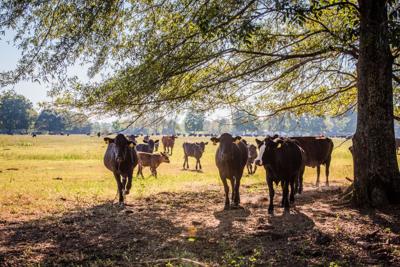
Small farmers practicing on-farm slaughter hope to take a bite of the large beef processors’ market share.
“My belief is that we should slaughter animals where they are,” said Mike Callicrate, a Kansas cattle producer.
Callicrate and others are showing that on-farm, USDA-sanctioned processing can work, once you make the investment.
He said once animals are slaughtered on the farm, they can be moved to urban centers for further processing.
“Then you get the best of both worlds,” Callicrate said. “You get the humane treatment of the animal that doesn’t have to get on a truck and travel 500 miles as a finished animal to a slaughterhouse where they may wait on a truck for a day before they even get unloaded. Depending on weather, that could be horrible.”
That makes sense economically too, he said, because carcasses weigh on average 36% less than live finished animals.
“Basically, what we’re doing is going back 50 years to the way it used to be done right before IBP and their boxed beef took over,” he said, referring to the Tyson Foods brand for which he serves as lead plaintiff in a lawsuit alleging unfair and discriminatory marking practices.
JBS USA, Cargill Meat Solutions and National Beef Packing Co. are the other three top U.S. beef producers.
Together the four largest companies control 85% of beef processing.
Having skilled butchers cut carcasses into retail cuts in the communities they serve allows people to see where their food comes from, reduces waste of paper and plastic, and is better in terms of food safety, Callicrate said.
Small producers and processors must recapture a fair share of the food dollar to stay in business, he wrote on his blog, No-Bull Food News. In 1970, before the current concentration, consolidation and globalization of the beef industry, producers’ share of profits for their products was 82%, compared to the range of 39% to 48% in 2023.
“The big guys have completely failed us,” Callicrate said. “That supply chain just doesn’t work anymore. It’s abusive, it’s exploitative, it’s extractive, and we just need to build something better.”
The industry made a huge blunder in the late ’70s shifting to boxed beef, he said. “And during the ’80s, we wiped out all the small packers that used to provide really good high-quality product in the grocery stores with real butchers.”
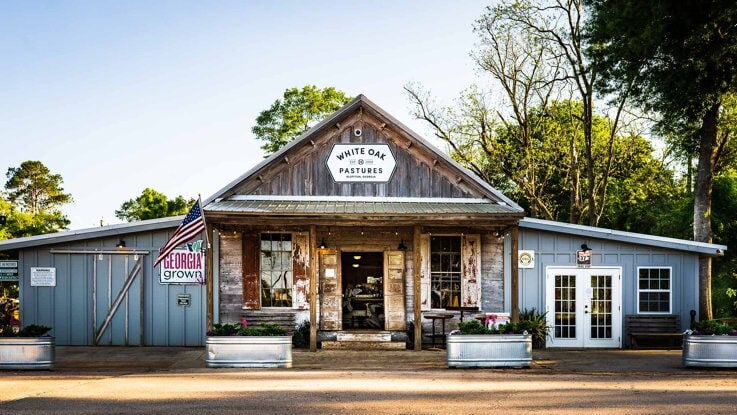
White Oak Pastures General Store in downtown Bluffton, Georgia.
Will Harris of White Oak Pastures is a fourth-generation cattleman who tends the same land his great-grandfather settled 3 miles outside Bluffton, Georgia, in 1866.
“He slaughtered something every morning, six days a week,” Harris said. “It might have been a cow, might have been a couple of hogs, might have been 100 chickens.”
Harris’ great-grandfather then hauled the meat into town on a mule-drawn wagon and sold it to consumers, stores, the café or the local boarding house. His grandfather operated the farm the same way.
“His son, my father, born in 1920, took over the farm after World War II, really industrialized, commoditized, centralized the farm,” Harris said. “Under him, it went to a monocultural beef cattle operation.”
Harris, who earned a degree in agriculture from the University of Georgia in 1976, ran things the same way for 20 years.
Then he began to switch things up, selling half sides of beef directly to customers. Business took off when he began selling grass-fed beef to Kroger, Whole Foods, Publix and other supermarkets.
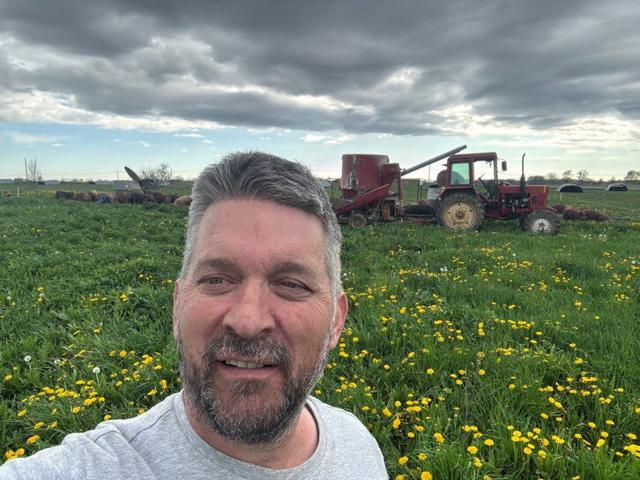
Greg Gunthorp on his farm
It worked well and was profitable, Harris said, until USDA changed the rule on country-of-origin labeling in 2015.
“Previously it had been the cow had to be born, raised and slaughtered in one of the 50 states to be a product of the USA,” he said. “They changed the definition so that if any value was added in the USA, it was a product of the USA.”
That allowed grass-fed beef to be imported from Uruguay, Australia, New Zealand and more than 20 other countries.
It killed his wholesale margins, Harris said. (USDA finalized a rule in March 2024, effective in 2026, saying meat labeled “Product of USA” must be derived from animals born, raised, slaughtered and processed in the U.S.)
When the pandemic hit, Harris’ online sales exploded.
“I ultimately built a slaughter plant on the farm,” he said. “We can slaughter about 130 head a week if we only slaughter cattle. We also have a USDA-inspected poultry slaughterhouse. We raise cows, hogs, sheep, goats, rabbits and poultry.” The farm also grazes sheep on about 2,000 acres of solar arrays.
Harris reported 2024 as his most profitable year. He said another case to be made for on-farm slaughter is food security.
“If one or two or three or four of these huge meat plants that feeds this country were taken out of operation, it would be pretty tough,” he said. “There would be a lot of people that couldn’t get meat for a while. If there are a lot of little-bitty operations, you’ve got a lot more resilient food supply.”
Greg Gunthorp of Gunthorp Farms in LaGrange, Indiana, traveled to England and Scotland as an FFA exchange student, then earned a degree in agricultural economics before returning to the family farm in 1990 to raise pigs.
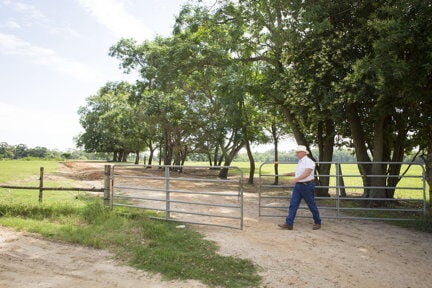
Will Harris at his farm gate.
“Just a few years into that, my dad said that the hog market was over for the small independent hog farmer and that we were going to sell the pigs,” he said.
Not ready to give up on his dream, Gunthorp and his wife bought his parents’ sow herd and breeding stock.
“Four years later, we got less for live pigs than what my grandpa sold them for in the Depression,” he said. “My dad was right. The hog market crashed.”
Recalling his trip abroad 10 years earlier, Gunthorp remembered some of his host families direct-marketing to customers and how he thought that was crazy at the time. But now guys like Bill Niman and John Jamison had begun selling to top chefs and venues.
Gunthorp began knocking on the doors.
“We sold our first pig to Charlie Trotter in Chicago, and Wine Spectator magazine that same month rated him the No. 1 restaurant in the world for food and wine,” he said.
Gunthorp invested in a processing plant 37 miles north of his farm.
“It only took me a few months to realize that if you’re going to sell to upscale restaurants and food service, how you cut it and how you package it is extremely important, and how quick you get it to them so that it’s extremely fresh and so that they have a long shelf life is extremely important. And we weren’t going to be able to control that unless we did the processing ourselves.”
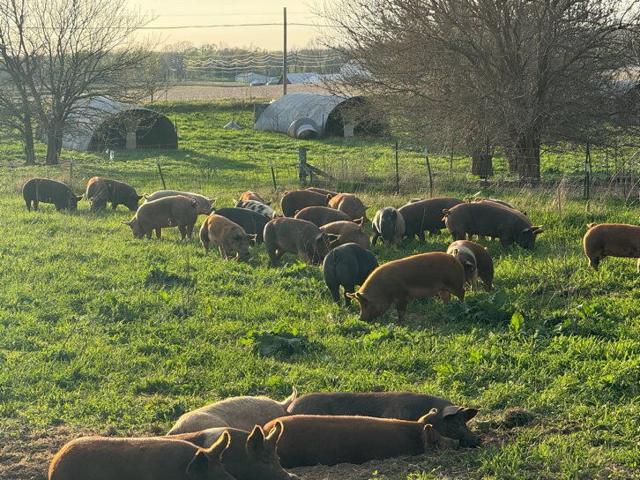
Gunthorp pigs on pasture.
So, 20 years ago, Gunthorp built a USDA-inspected processing plant on his farm.
“It was quite a battle,” he said. “It took me 14 months from when I called USDA to get them to even come out and talk to me.”
Gunthorp Farms sells pork, turkey and duck to online retail customers in 26 states via UPS ground shipping and delivers to restaurants and food service customers around Indianapolis, Detroit, Chicago and Ann Arbor, Michigan.
Gunthorp said he always warns people that it costs substantially more to process and distribute at small scales, so his pricing is generally two to four times higher than commodity product.
“The only difference in our plant versus if we took them somewhere else is the fact that our plant’s on the farm,” he said. “We’re full USDA inspection at the farm. We get three USDA inspectors a day.”
On-Farm Beef Processing Cuts Out the Middleman | Livestock News | lancasterfarming.com